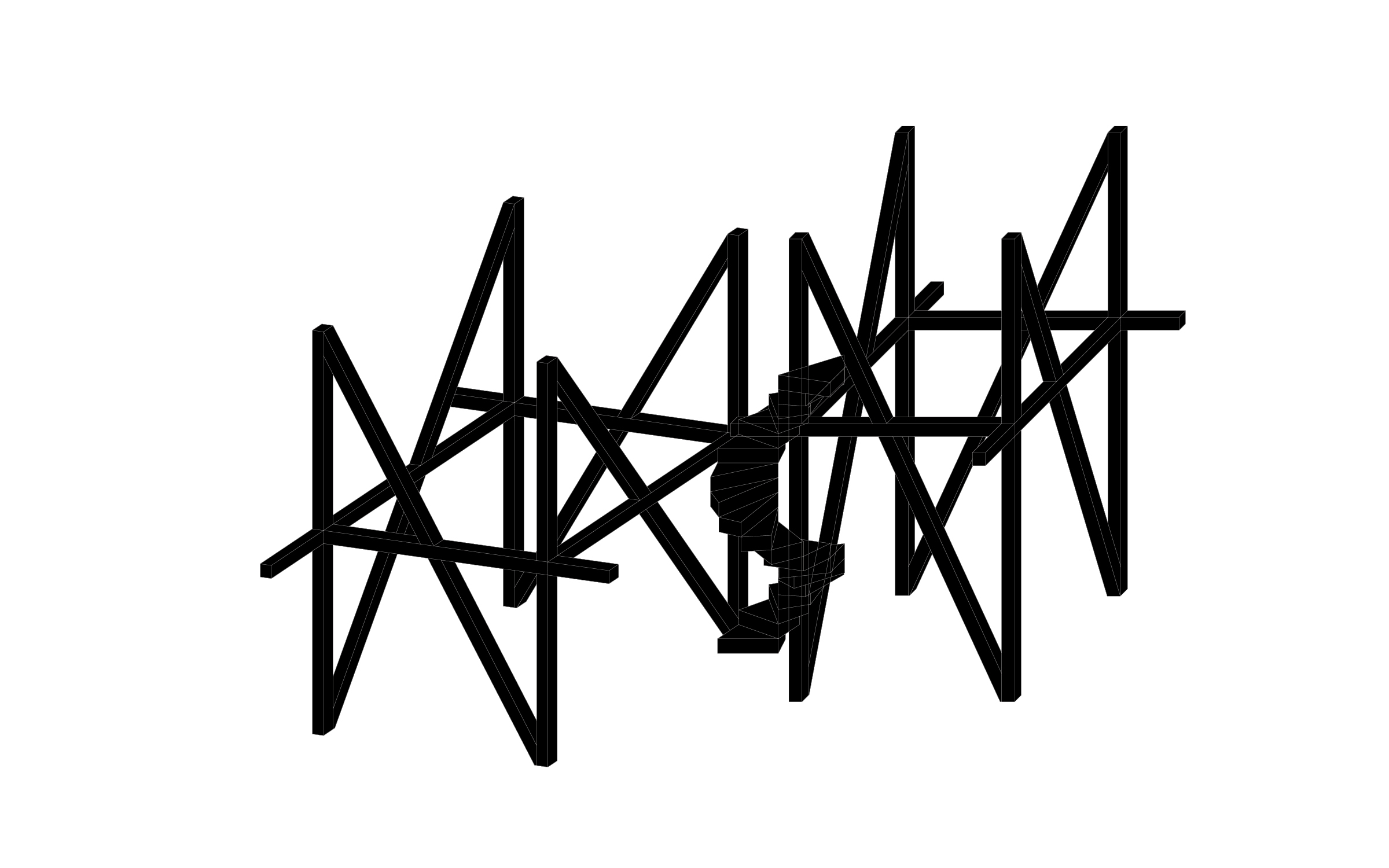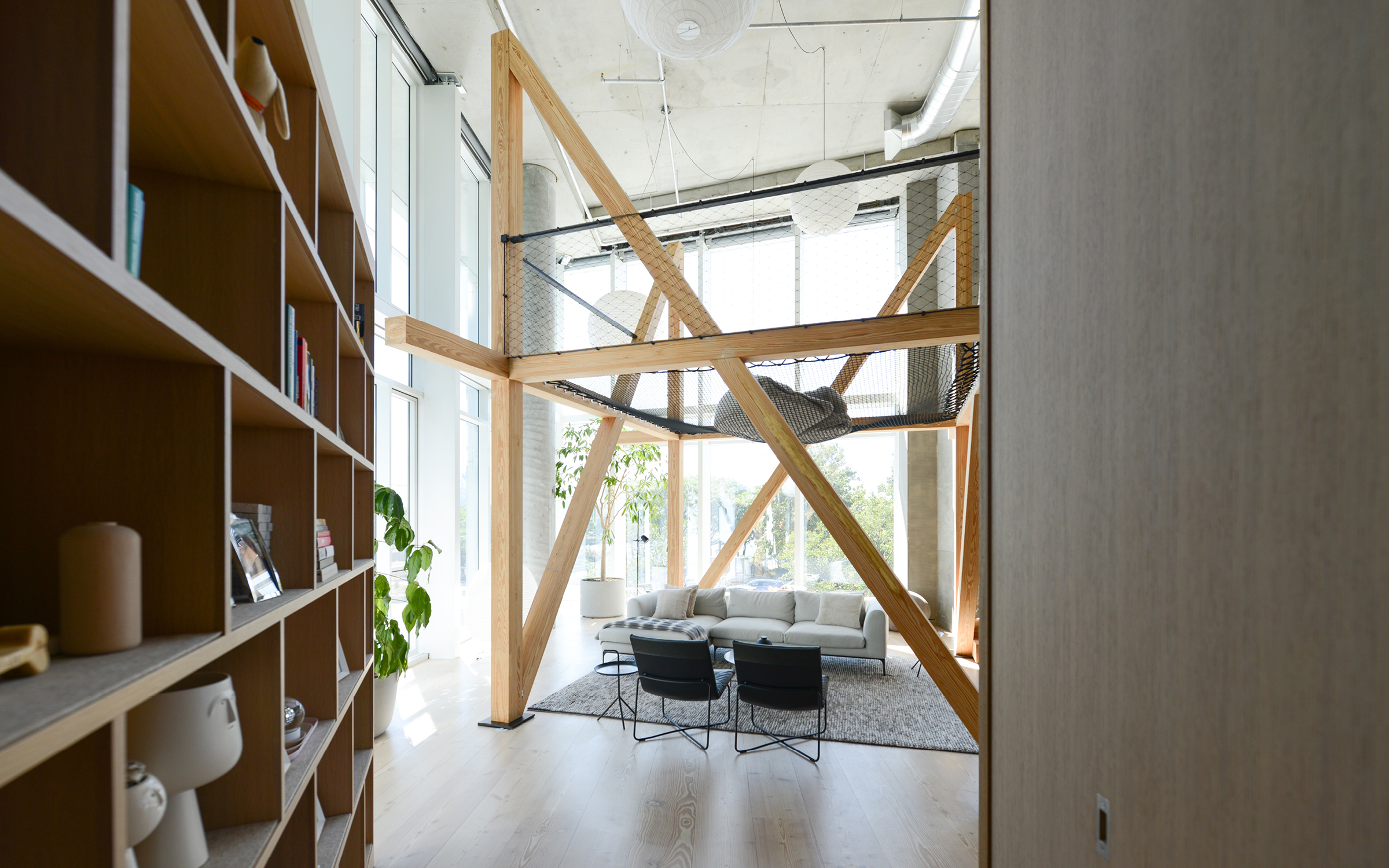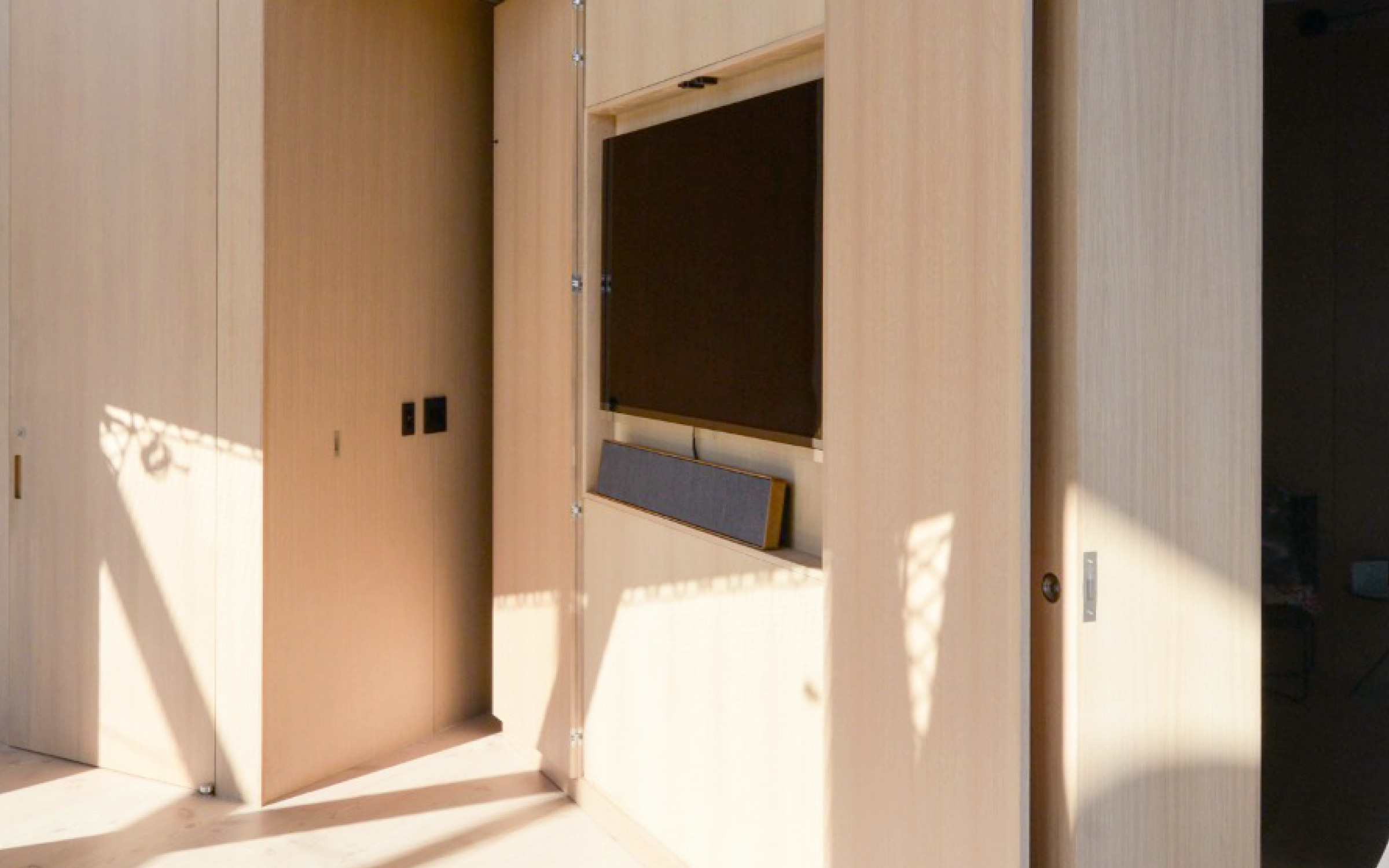Urban Tree House
Within an iconic tower at the edge of Manhattan’s West Village, we combined two units by first, redrawing all rooms into a cohesive “matrix plan;” and second, inserting a “garden folly” that relates the interior to the adjacent Hudson River Greenway. A conceptual thread running throughout NO ARCHITECTURE’s projects, the “matrix plan” prevents spatial inefficiency and social isolation by ensuring all adjacent spaces remain interconnected. Billed as a 4-bedroom, 4-bath apartment, the apartment in practice supports multiple programmatic configurations. Rather than “bedrooms,” the more ambiguous term “chambers” more accurately describes their open-ended, user-defined possibilities. No longer passive occupants subjected to predetermined conditions, inhabitants actively participate as co-designers who control a system of bespoke “operable walls” that can modulate varying degrees of privacy or connectivity. Massive movable bookshelves, for example, mediate the thresholds between the double-height loft space and its adjacent chambers: one wall hangs from a built-in track, the other rotates 360 degrees. The entire length of a chamber also completely retracts to incorporate the adjacent corridor. More subtly, this concept of “operable walls” informs the detailing for all doors, which appear as matching, full-height continuations of the Douglas fir paneling that runs throughout. Across these multiple iterations, the architectural question of the “wall” no longer functions primarily as separation, but also—through the added quality of motion—as connection.
Continuing to interrogate the fundamental nature of “partition,” the installation of a “garden folly” responds to the inhuman proportions found in the newly combined double-height space, which opens to the city through 22-ft tall glass walls on three sides, and takes on the scale of landscape. To reduce this volume without sacrificing the desirable qualities of its light-filled open plan, we inserted two “tree houses” connected by a self-supporting spiral stair. Elevated hammock-like platforms reveal new perspectives, including direct water views otherwise obscured by tree canopy. Negotiating relationships between architecture and nature, one tower aligns with the apartment’s interior walls while the other rotates to face the adjacent park and Hudson River beyond. Like inhabitable diagrams, these installations can be read as two fragments of a 3-D gridded matrix—the timber framework expressing x-, y-, and z- lines of interconnecting spatial relations.





















Location
New York, New York, US
Program
Private residence
Area
326 m² / 3,512 ft²
Status
Completed 2021
Value
$4 million
Team
Andrew Heid, Chengliang Li, Chuhan Zhou, Feng Zhao, Kun Qian, Nadya Mikhaylovskaya, Theo Dimitrasopoulos, Trendelina Salihu, Wanpeng Zu, Xiangxiang Wang, Zhe Cao, Ziwei Deng
Collaborators
GMS, Gallon Engineering, Blueberry Construction
Distinctions Cover of Wall Street Journal Mansion.
New York, New York, US
Program
Private residence
Area
326 m² / 3,512 ft²
Status
Completed 2021
Value
$4 million
Team
Andrew Heid, Chengliang Li, Chuhan Zhou, Feng Zhao, Kun Qian, Nadya Mikhaylovskaya, Theo Dimitrasopoulos, Trendelina Salihu, Wanpeng Zu, Xiangxiang Wang, Zhe Cao, Ziwei Deng
Collaborators
GMS, Gallon Engineering, Blueberry Construction
Distinctions Cover of Wall Street Journal Mansion.
